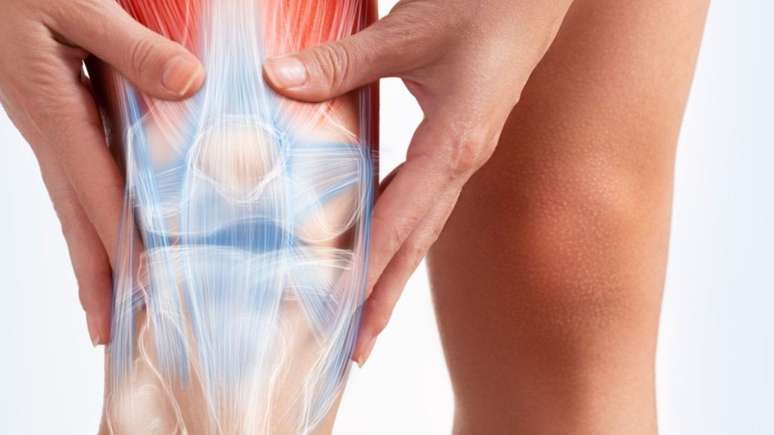Anatomical and hormonal issues explain why discomfort may be more common among them; experts provide guidance
It is not uncommon to hear people commenting that they have suffered an injury or feel pain in their knees. This is true for both men and women, as these structures are a frequent target for discomfort and injury. And it is not surprising, after all, the knee has complex joints that support the weight of the body and also absorb the impacts caused by daily movements, such as walking and climbing stairs, and even physical exercise.
However, for women, this care must be doubled, as they are at greater risk of injury to this part of the body. This happens because of the female anatomy itself. “A woman’s pelvis is typically wider, her knees are valgus, or bowed inward, and her Q-angle, formed by the quadriceps’ pull vector, puts more pressure on the knee, which can increase stress on that joint.”the orthopedist explains Marcos Cortelaso, specialist in knee and sports traumatology Albert Einstein Israelite Hospital and member of Brazilian Society of Knee Surgery (SBCJ) and the International Society of Arthroscopy, Knee Surgery and Sports Medicine (ISAKOS).
And there’s more. “Women in general have less muscle strength and less joint stability, which increases the tendency for sprains and subsequent joint injuries.”adds the orthopedist and traumatologist Moses Cohen, also by Einstein. According to him, another detail is that female kneecaps tend to be positioned more laterally. “This increases the risk of chondromalacia, a damage to the cartilage that covers this part of the knee.“, observes Cohen, who is also a full professor in the department of Orthopedics, Traumatology and Sports Medicine from the Federal University of Sao Paulo (Unifesp).
Other factors for knee pain
Hormonal fluctuations during the menstrual cycle also have a significant impact on the knees. “Joints, as well as the cartilage that protects them, are equipped with receptors for estrogen, a hormone that helps maintain the health of these structures”says Cortelazo. “When estrogen levels change during the menstrual cycle, the ligaments become more fragile, causing them to become looser, which is more likely to cause injuries, such as those to the anterior cruciate ligament.”
And this mechanism also triggers consequences in menopause. Since in this phase of life hormonal production changes and estrogen levels decrease, the joints become more inflamed, causing pain in areas such as hands, shoulders and knees, favoring for example the development of osteoarthritis. “During this time, bone and muscle loss also occurs, causing muscle and bone weakness, which also predisposes to injury.”adds Cohen.
Cortelazo also draws attention to the constant use of high heels, another problem that can hurt the knees. Wearing these shoes causes the person to distribute their body weight and walk differently, concentrating the pressure on this joint. He explains that this ends up demanding more from the knees and promotes wear, especially on the cartilage of the patella. As a result, it increases the predisposition to conditions such as chondromalacia patellae and osteoarthritis.
Exercises help minimize problems
Muscle strengthening is one of the main allies of women’s knees, as muscles help protect, stabilize and support the joint. “Proprioception exercises that involve unexpected movements, zigzags and on uneven terrain are also welcome, because they train agility and help provide more safety and balance when moving the knees, preventing falls and injuries,” adds Cohen.
Other very important practices are stretching, avoiding excessive overloads in training, controlling weight, performing movements with adequate techniques and adequately adapted to the female body. “And, if there is any sign of pain, swelling or difficulty moving the knee, it is essential to consult an orthopedist so that he can make the correct diagnosis and indicate the appropriate treatment”, warns Cortelazo.
*Article originally published on Perfil Brasil
Source: Terra
Ben Stock is a lifestyle journalist and author at Gossipify. He writes about topics such as health, wellness, travel, food and home decor. He provides practical advice and inspiration to improve well-being, keeps readers up to date with latest lifestyle news and trends, known for his engaging writing style, in-depth analysis and unique perspectives.







